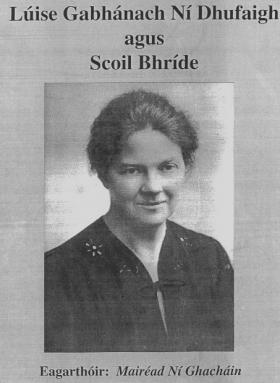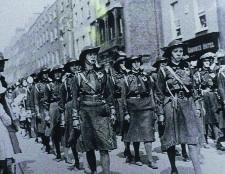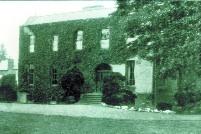‘A work for other hands’: Patrick Pearse and St Ita’s College
Published in 20th Century Social Perspectives, 20th-century / Contemporary History, Issue 2 (Mar/Apr 2006), News, Volume 14
Louise Gavan Duffy—St Ita’s second ‘house mistress’.
simply: ‘It is hardly within my province to deal with the story of St Ita’s College. That is a work for other hands’, and recorded little more of its existence than the dates of its opening and closing (September 1910 and June 1912 respectively). St Ita’s (named, like the better-known boys’ school, after a semi-mythical early Irish Christian saint and missionary) occupied the premises at Cullenswood House which St Enda’s vacated in 1910 when, two years after it was founded, Pearse decided to move his bilingual day and boarding school to a more remote site in Rathfarnham.
Amongst the few sources available for knowledge of the girls’ schools are Pearse’s letters, which contain a good deal of valuable detail about the business affairs both of the perennially penurious St Enda’s and its equally cash-strapped sister school.

Members of Cumann na mBan marching in Dublin—many St Ita’s pupils became and remained active Republicans.
In practical terms the Cullenswood House operation was far from being a financial success, and when the main school, St Enda’s, was ailing (largely a self-inflicted injury as Pearse had lost many pupils through his impetuous relocation to Rathfarnham, an unpopular, distant site for many Dublin-dwelling parents) it was St Ita’s that had to be sacrificed. In a last bid to save the girls’ school, Pearse seems to have accepted an offer from Louise Gavan Duffy, then a St Ita’s teacher, to refinance the venture, but this involved her ousting Mrs Bloomer and replacing the latter as house mistress. This was not a universally acclaimed move on his part. Fourteen pupils wrote to express their regret at Mrs Bloomer’s departure. In the event, the Gavan Duffy intervention also failed and St Ita’s was closed, though a new school has since occupied the same site.
In subsequent years Pearse seems to have made assiduous efforts to repay his debt to Mrs Bloomer, as evinced by his frequent letters to her on the subject, sometimes enclosing piecemeal payments, more often importuning more time to pay (‘I have no money available at present . . . I can only ask you to have patience’). An unpaid bill and accompanying letter from a firm of Dublin booksellers shows that Mrs Bloomer’s finances and those of the school were inextricably intertwined. She had evidently bought books on her account for the girls’ use and, a year and a half after the school’s closure (the bill is dated 27 January 1914), she was being asked to settle for goods that she had not purchased for her personal use.

Cullenswood House—home of St Ita’s after St Enda’s vacated it in 1910. (Pearse Museum)
Louise Gavan Duffy served in the alliance of Irish Volunteers and Citizen Army that seized key points in Dublin that fateful Easter Week. In later years she founded her own school, and in the 1960s this moved onto the old Cullenswood House site. Further details about Mrs Bloomer would seem to be elusive. One prominent former pupil, Mary Bulfin, went on to marry Seán McBride. Several others, it seems, became and remained active Republicans. In this much Pearse appears to have had some influence on his female pupils; whether that influence was for good or ill is more a political or moral than historical question.
David Limond lectures in the history of education at Trinity College, Dublin.
















